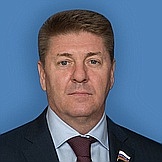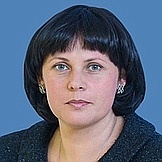Regional flags and emblems


PROFILE
Established 7 December 1934
Capital Orenburg
The Orenburg Region is part of the Volga Federal District
Area 123,700 sq km
Population 1 815 700 (2025)
Ethnic groups
(2020 National Census, %)
Russian – 79,29
Tatar – 6,70
Kazakh – 6,19
Bashkir – 2,08
Mordovian – 1,05
Other – 4,69
Administrative divisions (2024)
Municipal districts – 29
Municipalities – 13
Rural districts – 444
Geography and climate
The Orenburg Region is located at the foothill of the Southern Urals. The Obshchy Syrt slopping ridge is in the west and the Guberlinskye Mountains are in the central part (up to 667 m high).
The region borders on the republics of Bashkortostan and Tatarstan, the Chelyabinsk, Saratov and Samara regions. It also has a state border with Kazakhstan.
There are 623 waterways in the region, more than 312 ponds and water reservoirs, including its largest artificial reservoir, Iriklinsky. There are several karst lakes, including three major ones, Koskol, Oktyabrskoye and Kopa. There are terminal lakes (Shalkar-Yega-Kara, Zhetykol and Aike) in the southeast. The major rivers are the Ural with its tributaries (Sakmara, Oryo and Ilek).
The local climate is continental. January is the coldest month (average temperature around −12°С) while July is the warmest month (average temperature up to +21.6°С).
The region has the Shaitan-tau State nature reserve, Orenburgsky State reserve and the Buzuluksky Bor national park.
Government
The legislative branch is represented by the regional Legislative Assembly, which is the permanent, representative and only body of legislative authority in the region.
The Legislative Assembly has 47 deputies elected for five years, with 23 of them running in single-mandate constituencies and the other 24 in the regional electoral district, where winners are identified in proportion to the number of votes cast for lists of candidates nominated by electoral associations. The current Legislative Assembly was elected in September 2021. Its term expires in September 2026.
The executive branch of the Orenburg Region is represented by the Governor of the Orenburg Region, the Government of the Orenburg Region, and other executive agencies of the Orenburg Region. The regional government is the supreme and permanent executive body of the Orenburg Region.
The Governor of the Orenburg Region is the region’s highest-ranking official who heads the regional Government. The Governor is elected for five years by Russian citizens who permanently reside in the region.
The term of office of the Acting Governor – until the person elected Governor of the Orenburg Region takes office.
Economy and natural resources
Located at the junction point between Europe and Asia, the Orenburg Region brings together the eastern and western regions, connecting the Urals with the Volga Region and Central Russia.
The region is a developed industrial and agricultural area.
The share of industrial production in the regional GDP is over 50%.
Fuel and energy production and metal industry, as well as machine engineering, chemical, consumer goods, petrochemical industries and food production carry the largest weight in the region’s industrial composition.
The region has around 2,500 developed deposits of over 75 types of mineral resources. The western part of the area has deposits of oil, natural gas, asphaltite, lignite, oil shale, rock salt, potassium and magnesium salts, rock phosphate, chalk, plaster, mortar sand, sand and gravel aggregates and brick clay. The eastern part is reach in nonferrous and ferrous metal ores, hardrock and placer gold, asbestos, cladding and building stones, high-quality limestones, dolomites, quartzite, mineral paints, clay and cements.
The region’s major companies include Rosneft (Orenburgneft), Gazprom (Gazprom Dobycha Orenburg), Metalloinvest (Uralskaya Stal), Ural Mining and Metallurgical Company (Gaisky Mining and Processing Integrated Works, Mednogorsky Copper and Sulphur Integrated Works, Orenburgsky Radiator), Yuzhnouralskaya mining and processing company, ”Strela“ Production Association.
Production and distribution of electricity, water and gas is dealt by the energy grid comprising the Iriklinskaya Thermal Power Station, thermal power stations and combined heat and power stations. Over 95% of the region has access to the gas distribution system.
The agricultural industry accounts for around 9% of the regional GDP. The main directions of development include grain production (spring and winter wheat, barley), grain legumes (peas, grain maize, oats), industrial crops (sugar beets, sunflowers), potatoes, vegetables (tomatoes, zucchini), melons and gourds as well as cattle, pig, sheep breeding and poultry farming.
Major railway lines also run through the region, one connecting Moscow, Orenburg, Tashkent and the other connecting Orenburg, Orsk, Chelyabinsk and Yekaterinburg.
Culture and tourism
The Orenburg Region is historically a multi-ethnic and multifaith area with more than 100 ethnicities comfortably living side by side. In Orenburg’s Traditional Village, local residents and tourists can learn about the history, culture and lifestyle of numerous ethnicities.
The region has a large historical and cultural potential. There are a great number of libraries and museums. The Orenburg Region is unique for the number of historical monuments, cultural, archaeological sites and for it architecture. Over 1,500 archaeological sites have been discovered in the region, including single and multiple burial mounds and ancient settlements. Numerous remains of Jurassic-era sea invertebrate creatures have been found in the Mount Zmeinaya sandstones near the village of Mikhailovka. The section of Late Jurassic stratums can be seen on the mountain cliff. Kargalinsky copper mines, traces of the Sauromates-Sarmatian culture account for only a small part of the region’s huge historical legacy.
The Orenburg Region hosts traditional annual international festivals, including the Vostok-Zapad Film Festival, the Gostiny Dvor Drama Festival, the Arbuznik Sol-Iletsk Festival, the Europe−Asia Jazz Festival, the Mstislav Rostropovich Steppe Palmyra Symphony Classical Music Festival, the Matsuyev Seasons and the Orenburg Shawl Folk Arts Festival.
The region is known for its unique variety of landscapes and natural landmarks, a combination of mountainous and flat areas, therapeutic muds and healthy climate. In addition to nature, the region boasts cultural and religious sites, which makes it an attractive tourist destination.
The Orenburg Region is a source and centre of unique balneological treatments, thanks to the steppe climate, landscape, steppe vegetation and mineral sources, therapeutical muds and salty lakes.
Famous Sol-Iletsk resort is also located in the Orenburg Region. The resort’s mineral water lakes and bottom muds have special medicinal qualities similar to those of the Dead Sea.


